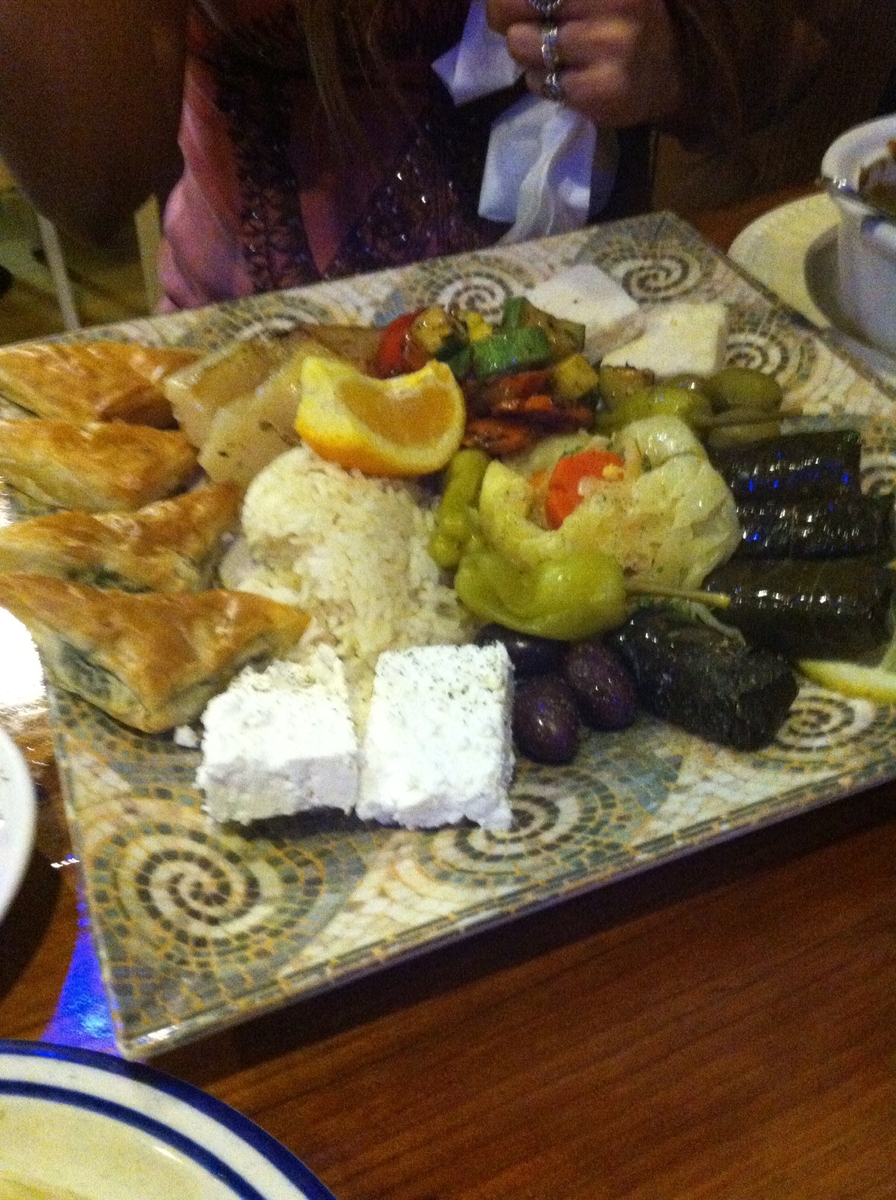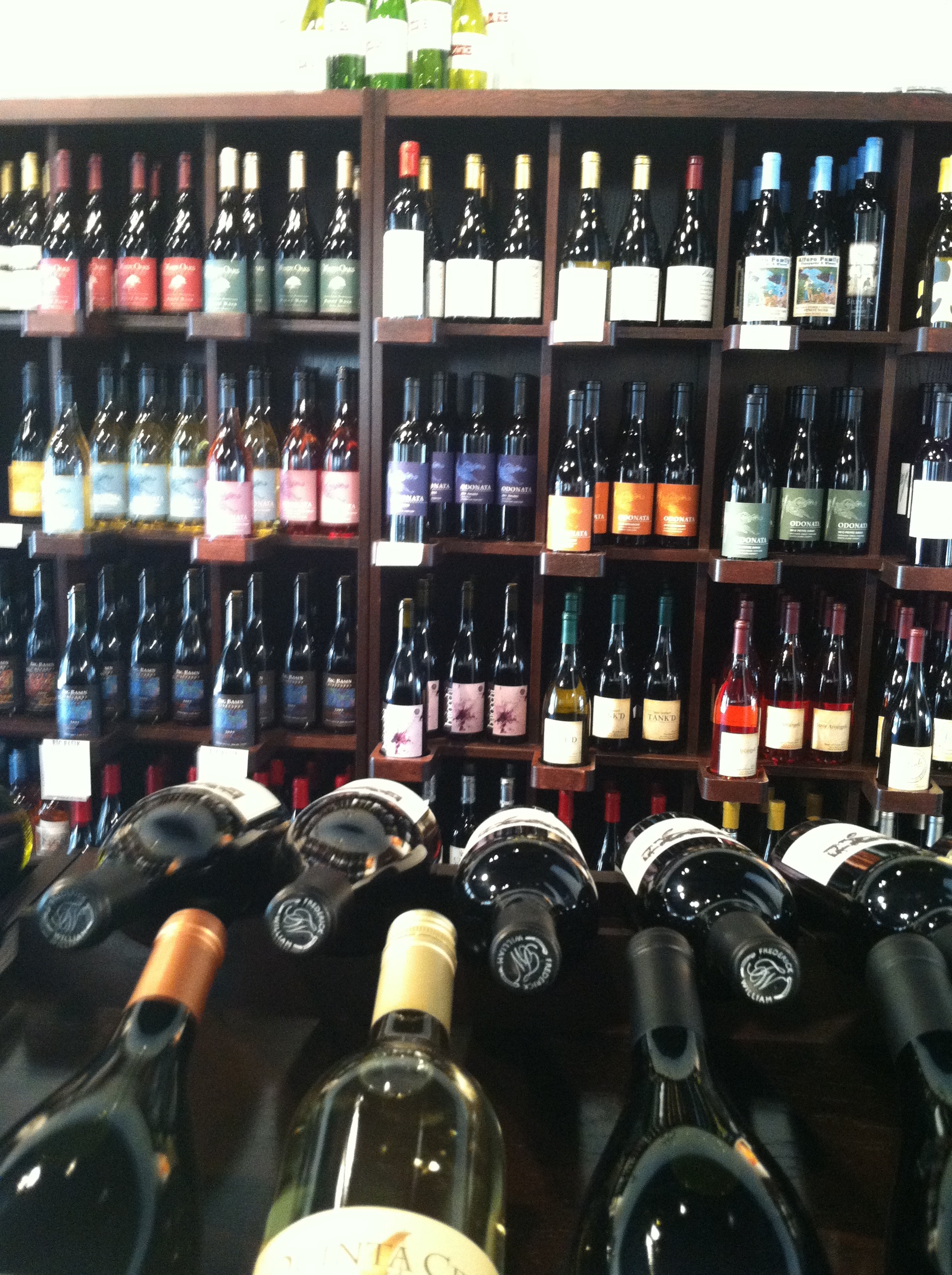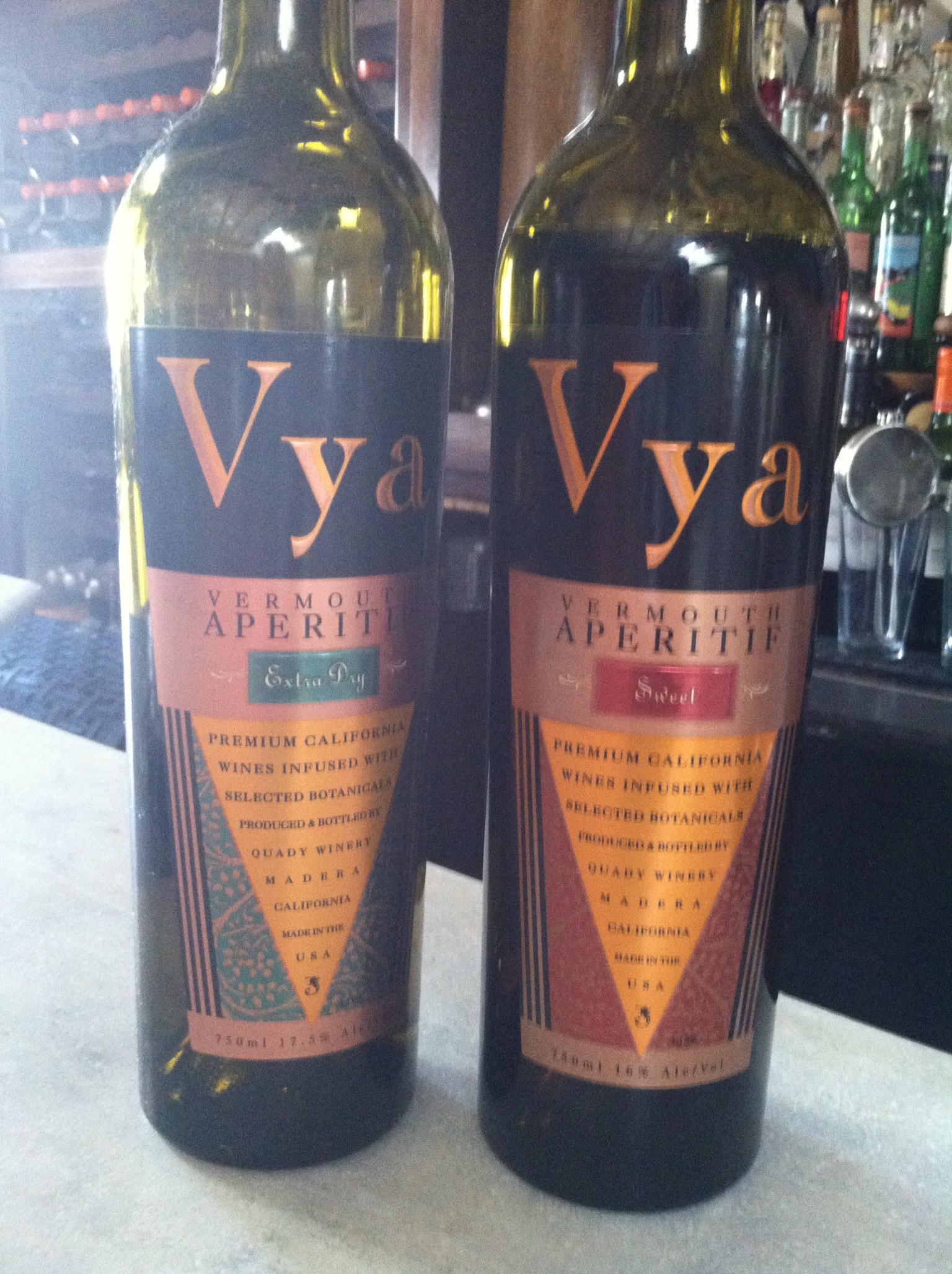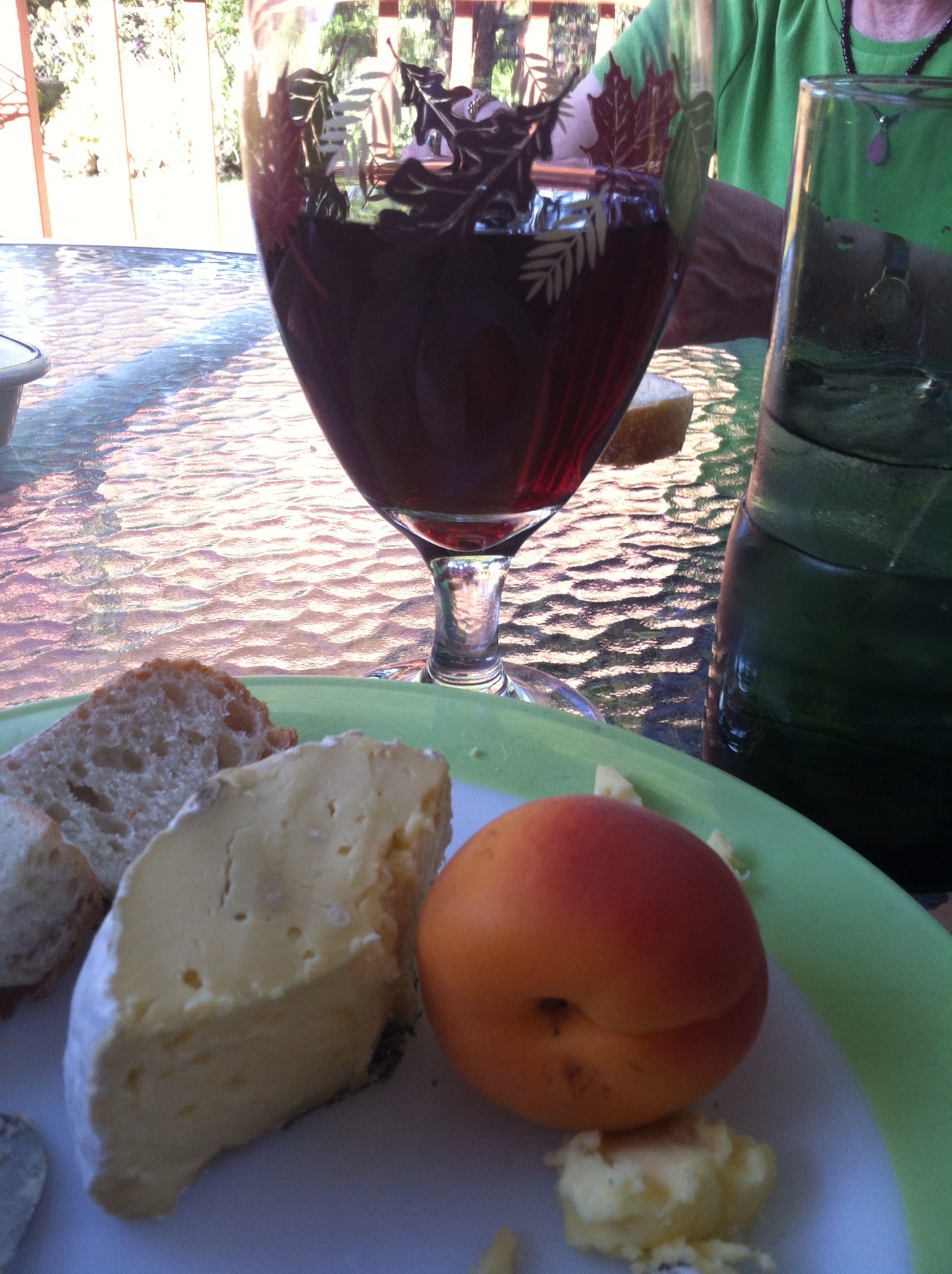
I posted a smallish (43-photo) photo album over at Facebook; if you've never been to Santa Cruz, it's worth a look. If you have been there, you might check it out just for the memories.

I went to Greece in 1995, and I remember drinking Greek wine and grazing on little bites at the taverna with my friend's family late into the evening. That's just what we did in Santa Cruz that evening, drinking Greek wine and feasting on dolmas, saganaki, skordalia, horta vrasta, spanakopita, and other Greek delights as we caught up with Hector.

You can also see the hundreds of sea lions that flock together beneath the wharf, like this mama and baby. You can get very near them, but that's not necessarily a smart thing to do.

Santa Cruz and the surrounding hills produce a lot of wines that, while not as celebrated as those of Napa and Sonoma, are quite creditable. We had dinner plans that evening with local friends, so of course your Foodie Pilgrim had to find some local fare to bring. Vinocruz satisfied the wine requirement with a pleasant Silvertip Pinot Noir, and the equally intensely locavore New Leaf Market provided a couple of fine California cheeses.
But that was not the important mission.

Hector and I trekked up and down Pacific Ave, down every side street, seeking the finest bars in town. Alas! The best candidates for this top-shelf research were all closed until 4pm and we had planned to meet with Lorna and Melissa at 4:30. We would have time to try only one.
At about 3:57pm, Hector and I were ready outside the 515 Kitchen & Cocktails, confident of success. That's because earlier we had met the owner preparing for the evening's trade and he assured me that he could assist our quest. They had a number of the California gins, but I had time for only one so I had to make it count; I opted for the strangely golden Tru2 Organic Gin. A quick sniff informed me that it was of the spicy, rich variety that often play well with sweet vermouth. The highly-skilled and very accommodating bartender mixed up two half-cocktails for me: a traditional Martini and a Crocker cocktail. It was excellent in both. That was a success, but we had to get moving to make our dinner date.
The dinner epitomized the Santa Cruz foodie experience; everything was local, vegetarian, and mostly organic. We started outdoors with that Silvertip Pinot Noir and a St Pat cheese from Cowgirl Creamery of Point Reyes Station. The fruit was local and the bread was baked that day.
I thought for a bit how nice it would be to have all sorts of foods be local and always in season. Every fruit and vegetable is grown within a hundred miles, and half of that circle is the Pacific Ocean. Outside our motel along the sidewalk was a hedge of rosemary! I'm lucky if my tough old plant survives the winter healthy enough to grow again.
 But they don't have our seasons and our seasonal foods. They don't have winter cooking or seek the fiddleheads and shad roe when the forsythia blooms, or anticipate the first tiny sweet strawberries in June. California farms are not like New England farms. I love a fresh tomato year-round, but to be honest I think they taste better when I have had to wait ten months for them.
But they don't have our seasons and our seasonal foods. They don't have winter cooking or seek the fiddleheads and shad roe when the forsythia blooms, or anticipate the first tiny sweet strawberries in June. California farms are not like New England farms. I love a fresh tomato year-round, but to be honest I think they taste better when I have had to wait ten months for them.



Comments